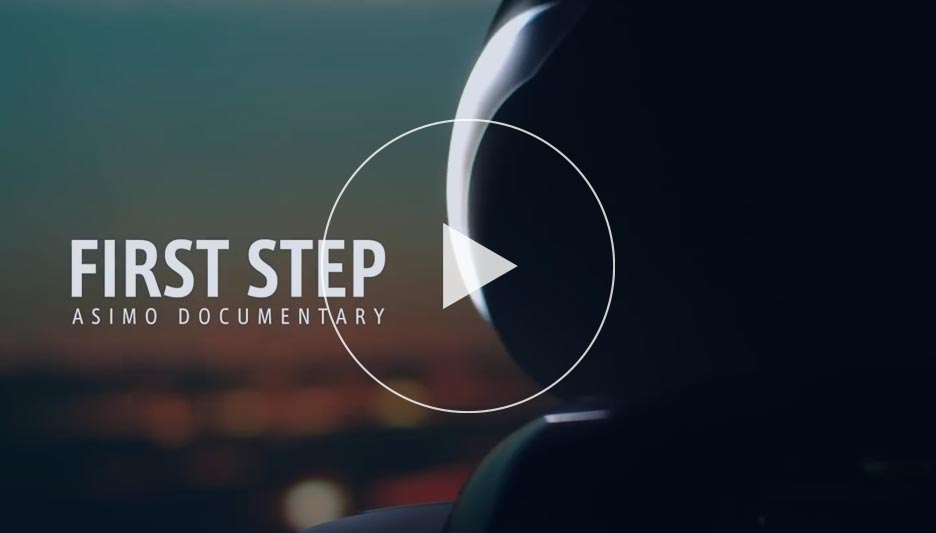What We Learned From ASIMO
ASIMO presented the vision for “people’s daily lives with robots.”
Through the development of ASIMO, Honda has gained the prospect of realizing the physical capabilities needed for robots to operate in a living environment with people, with the capability to replicate some human functions through engineering.
In particular, we were able to realize three key functions:
- “Move around while sharing the same space with people,” which includes moving among people and not falling over when bumped into by a person.
- “Perform tasks by using hands.”
- “Interact with people,” including understanding spoken words and controlling movement/behavior according to the estimated intention of nearby people.
Moreover, by showing what it can do in a living environment with people, we believe ASIMO enabled many people to envision a future where robots co-exist with people and spread the wings of people's imagination.


The challenge identified after ASIMO took 33.26 million steps.
ASIMO performed demonstrations daily for more than 20 years after its birth. The total number of steps taken by all units of ASIMO amounted to more than 33.26 million steps and the total walking distance reached 7,907 km (4,913 miles). Such long-term operation of ASIMO taught us a number of things.
In order to create robots which can operate in a living environment with people, Honda pursued various initiatives to ensure the safety of nearby people, including the development of technology which will absorb the impact of a collision between the robot and a person.
Still, we were thinking, “What if there were children at the spot where our robot fell over?” What we realized through our ASIMO research was that in order to let robots co-exist with people in a real-world situation, we must assume many more scenarios and be even more conscious about the safety of people.
Long-term research and the establishment of regulations will be necessary for the realization of fully autonomous bipedal robots.
We also came to reaffirm that there are major challenges in making a robot autonomous, which means that the robot understands the complexity of the living environment with people and makes autonomous decisions on what to do.
As a result of more than 25 years of research and development of bipedal humanoid robots, we came to realize one thing. In order for us to create a fully autonomous bipedal robot that can operate in a living environment with people and that also gives due consideration to the safety of people around it in the event of a fall, we still have to continue long-term robotic research and development as well as to build consensus in society and establish laws toward enabling people to live with robots.
In this way, Honda has always thought about how to keep a robot operating in the environment where people live and gained know-how through ASIMO to take the next step forward.


Researching non-bipedal methods for robot’s mobility
Since we realized that the creation of a fully autonomous bipedal robot would still require long-term research in the future, we have been researching other methods of mobility for our robots. For example, the guide robot that was undergoing a verification process at the Narita International Airport used balls and wheels to move around, and we also conducted tests assuming a potential collision with small children.

- Honda Robotics TOP
- What we learned from ASIMO
- AdvancedTechnology Contents
